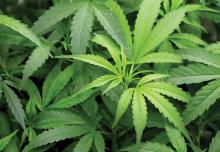WASHINGTON – Roughly 8.7% of Americans aged 12 years or older used illicit drugs in 2009, an increase of 0.7% from 2008, according to a national survey. The rise was largely driven by an increase in marijuana use.
Rates of illicit drug use among youth aged 12-17 years also increased by 0.7%, from 9.3% in 2008 to 10% in 2009.
The data is part of the 2009 National Survey on Drug Use and Health, conducted by the Substance Abuse and Mental Health Services Administration.
The increase in drug use is driven by several factors, SAMHSA officials said, including economic stress and unemployment, but also by the increased discussion about medical marijuana.
“This survey is really important,” said Gil Kerlikowske, director of White House Office of National Drug Control Policy during a press briefing to release the data. “This is a big wake-up call. We need to be doing more.”
Dr. H. Westley Clark, director of the SAMHSA Center for Substance Abuse Treatment, said that physicians can pay closer attention to signs of illicit drug use in their patients, and get familiar with federal substance abuse resources for health professionals such as the National Institute of Drug Abuse’s NIDAMed.
Approximately 67,500 U.S. residents were interviewed for this year’s installment of the National Survey on Drug Use and Health. They were queried on use of illicit drugs including marijuana/hashish, cocaine/crack, heroin, hallucinogens, and inhalants, as well as nonmedical use of prescription-type psychotherapeutic medications.
According to the survey estimates, marijuana was the most-commonly used drug – with approximately 16.7 million current-month users – followed by psychotherapeutics (7 million), cocaine (1.6 million), hallucinogens (1.3 million), inhalants (0.6 million), and heroin (0.2 million).
The rate of nonmedical use of prescription-type drugs among users aged 18-25 years increased steadily from 2002 to 2009, according to the survey, rising from 5.5% in 2002 to 6.3% in 2009. The increase was primarily driven by misuse of pain relievers. Overall, for U.S. residents 12 years or older, pain relievers had the highest rate of nonmedical use (2.1%), followed by tranquilizers (0.8%), stimulants (0.5%), and sedatives (0.1%).
Of those who misused prescription-type pain relievers, 55% of people 12 years or older got prescription-type pain relievers from a friend or relative for free. More than 17% got their pain relievers from one doctor, 5% got them from a dealer or stranger, and 0.4% bought them on the Internet.
The rate of illicit drug use also rose among U.S. residents aged 50-59 years, from 2.7% in 2002 to 6.2% in 2009 during the month prior to the survey. The trend, according to the survey, reflects the growing aging population.
The rate of misuse decreased for just two drugs – cocaine and methamphetamine – according to the survey. Misuse of cocaine decreased from 2.0% in 2008 to 1.4% in 2009 and the rate for methamphetamine decreased from 0.6% to 0.2% over the same period. Officials attributed the drops to more public awareness about the drugs.
The rates of alcohol and tobacco use remained relatively stable between 2008 and 2009, according to the survey.
Federal officials called for more community collaboration, from faith groups to health care providers, to increase awareness about the dangers of illicit drug use. They also stressed the importance of prevention, intervention, and treatment.


